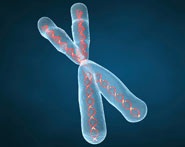


 النبات
النبات
 الحيوان
الحيوان
 الأحياء المجهرية
الأحياء المجهرية
 علم الأمراض
علم الأمراض
 التقانة الإحيائية
التقانة الإحيائية
 التقنية الحيوية المكروبية
التقنية الحيوية المكروبية
 التقنية الحياتية النانوية
التقنية الحياتية النانوية
 علم الأجنة
علم الأجنة
 الأحياء الجزيئي
الأحياء الجزيئي
 علم وظائف الأعضاء
علم وظائف الأعضاء
 الغدد
الغدد
 المضادات الحيوية
المضادات الحيوية| Antimicrobial Susceptibility Testing and Therapy of Staphylococcus, Micrococcus, and Similar Organisms |
|
|
|
Read More
Date: 2025-01-28
Date: 2025-04-13
Date: 2025-02-17
|
Identification of species using susceptibility testing is still useful in the differentiation of S. saprophyticus (novobiocin resistant) from other CoNS species (novobiocin sensitive). In addition, polymyxin B resistance is common in clinical isolates of S. aureus, S. epidermidis, S. hyicus, S. chromogenes, and some strains of S. lugdunensis. Resistance is indicated by an inhibition zone diameter of < 10 mm.
Antimicrobial therapy is vital to the management of patients suffering from staphylococcal infections (Table 1). Although a broad spectrum of agents may be used for therapy , most staphylococci are capable of acquiring and using one or more of the resistance mechanisms presented in Chapter 11. The unpredictable nature of any clinical isolate’s antimicrobial susceptibility requires testing as a guide to therapy. As discussed in Chapter 12, several standard methods and commercial systems have been developed for testing staphylococci.
Table1. Antimicrobial Therapy and Susceptibility Testing
Although penicillinase-resistant penicillins, such as methicillin, nafcillin, or oxacillin, are the mainstay of antistaphylococcal therapy, resistance is common. The primary mechanism for this resistance is production of an altered penicillin-binding protein (i.e., PBP 2a), which renders all currently available β-lactams essentially ineffective. Strains that carry the mecA gene, which encodes for PBP 2a, are referred to as methicillin resistant Staphylococcus aureus (MRSA). The mecA gene is carried on a mobile DNA element (SSSmec) that mediates wide dis semination of the antibiotic resistance. The prevalence of hospital-acquired, methicillin-resistant staphylococcus (HA-MRSA) has increased to >50% in some areas within the United States. In addition an increasing prevalence of community-acquired (CA-MRSA) and livestock-associated methicillin-resistant S. aureus has been associated with clinical infections. In addition, β-lactamase–producing strains should be considered resistant to all penicillins. Some strains have been identified that overproduce β-lactamase and may appear resistant to oxacillin on routine disk diffusion sensitivity testing but do not possess the mecA gene. HA-MRSA are often resistant to aminoglycosides, fosfomycin, fusidic acid, glycopeptides, ketolides, lincosamides, macrolides, quinolones, rifampin, tetracyclines, and trimethoprimsulfamethoxazole. Additional reports have identified isolates of S. aureus and CoNS resistant to linezolid, daptomycin, and tigecycline. CA-MRSA isolates are typically more susceptible to non β-lactam antibiotics.
MRSA isolates can also contain two subpopulations within a single culture, one that is oxacillin sensitive and one that is resistant. The resistant population grows much more slowly and is undetectable by routine susceptibility methods. MRSA Screen agar may be used to clarify and interpret the oxacillin sensitivity pattern for promotes the growth of the resistant population by the addition of 2% to 4% NaCl. This medium is then incubated at 35° C for a full 24 hours in order to determine the oxacillin-resistance pattern. Any growth on the MRSA screen agar indicates oxacillin resistance. Current recommendations indicate that successful detection of mixed populations may be enhanced by incubation at a lower temperature, 30° to 35° C for up to 48 hours. Alternatively, cefoxitin (30 µg) disk diffusion can be used to detect methicillin resistance in S. aureus and S. lugdunensis. An inhibition zone of ≤ 21 mm is reported as resistant and ≥ 20 mm is reported as sensitive. Other coagulase negative Staphylococcus spp. should be reported as resistance with a zone diameter of ≤ 24 mm. If micro dilution testing is used to detect mecA resistance using either oxacillin or cefoxitin, S. aureus and S. lugdunensis should be reported as follows: resistant to cefoxitin (minimal inhibitory concentrations [MIC] ≥ 8 ug/uL) and oxacillin (MIC ≥ 4 ug/uL) with CoNS resistant to oxacillin at an MIC ≥ 0.5ug/uL. Susceptibility testing with cefoxitin is the recommended method for the detection of the susceptibility or resistance to penicillinase resistant penicillins.
In addition to the increased penicillin resistance in S. aureus, many coagulase negative staphylococcal species within the health care settings are now becoming resistant because of the production of β-lactamase. Many iso lates are resistant to methicillin and other antibiotics.
Interpretive guidelines for S. aureus with penicillin MICs of ≤ 12 µg/mL or zones of ≥ 29 using screen tests should be retested using disk diffusion. The same interpretive guidelines as indicated here for S. aureus are recommended for use with S. lugdunensis. However, it is important to use nitrocefin-based testing in place of penicillin for reliable results. Isolates that test beta-lactamase positive should demonstrate a disk diffusion zone with a clear, sharp zone at the edge of the disk or “cliff.” If the isolates demonstrate a fuzzy zone or “beach” edge, the isolate should be considered beta-lactamase-negative. In addition, any isolates that demonstrate a high level of mupirocin resistance should be retested using disk diffusion (200-µg mupirocin disk) or by broth microdilution using a single mupirocin 256 µg/mL well.
The increasing incidence of methicillin-resistant Staphylococcus spp. isolated from infections has resulted in an increase in the use of macrolide antibiotics for treatment. Lincomycin antibiotics such as clindamycin are hydrophobic and capable of diffusing into the tissues, providing a means for killing deep infections with Staphylococci spp. However, macrolide resistance may be expressed as a constitutive mechanism or an inducible mechanism that is activated by the presence of erythromycin. This is typically identified in erythromycin resistant strains of S. aureus. Although erythromycin and clindamycin are different classes of antibiotics, their resistance mechanisms are similar. Resistance is mediated by either an efflux pump, msrA, resulting in macrolide resistance or the activity of a methylase enzyme that alters the ribosomal binding site, erm, which confers resistance to macrolides-lincosamide-streptogramin B and is referred to as MLSB resistant. The MLSB resistance phenotype is the macrolide resistance that may be expressed as a constitutive or inducible mechanism. To determine the organism’s susceptibility to clindamycin, a modified Kirby Bauer test, known as the D zone, has been used in microbiology laboratories. Two antibiotic disks are used: a clindamycin (2 µg) disk is placed 15 mm from an erythromycin disk (15 µg) on a Mueller Hinton agar plate streaked with confluent growth of the isolate. If the organism is able to express inducible clindamycin resistance in the presence of erythromycin, the cells will demonstrate a resistance in the zone of inhibition nearest the erythromycin disk demonstrating a characteristic D zone pattern. If this occurs, an alternate therapy is required for successful treatment of the infection.
Vancomycin is the most commonly used cell wall active agent that retains activity and is an alternative drug of choice for the treatment of infections with resistant strains. High-level resistance to vancomycin (MIC >8 µg/ mL) has been described in several clinical S. aureus iso lates, and strains with MIC in the intermediate range have been encountered. These reduced intermediate susceptible S. aureus (VISAs, MIC 4 to 8 µg/mL) are believed to have structural alterations within the organ ism’s cell wall. VISAs are also often resistant to teicoplanin. Vancomycin-resistant S. aureus are currently defined by the identification of an MIC ≥ 16 µg/mL and are readily detected using standard microdilution techniques. Intermediate vancomycin-resistant CoNS are currently defined as having an MIC 8 to 16 µg/mL. However, as resistance patterns increase, the detection of VISA has proved to be unreliable and probably underreported. Two relatively newer agents available for use against such resistant strains are linezolid and daptomycin. Because of the substantial clinical and public health impact of vancomycin resistance emerging among staphylococci, laboratories should have a heightened awareness of this resistance pattern.
Staphylococci spp. that demonstrate no intrinsic antibiotic resistance include S. aureus, S. lugdunensis, S. epidermidis, and S. haemolyticus. Intrinsic resistance has been reported in S. saprophyticus (novobiocin, fosfomycin, and fusidic acid), S. capitis (fosfomycin), S. cohnii (novobiocin), and S. xylosus (novobiocin). In addition, gram positive bacteria are intrinsically resistant to polymyxin B/colistin, nalidixic acid, and aztreonam. Any clinical isolates that are identified as oxacillin-resistant S. aureus, or coagulase-negative staphylococci should be considered resistant to all other beta-lactam antibiotics.
Because Micrococcus spp. are rarely encountered in infections in humans, therapeutic guidelines and standardized testing methods do not exist (see Table 1). However, in vitro results indicate that these organisms generally appear to be susceptible to most β-lactam antimicrobials.



|
|
|
|
لشعر لامع وكثيف وصحي.. وصفة تكشف "سرا آسيويا" قديما
|
|
|
|
|
|
|
كيفية الحفاظ على فرامل السيارة لضمان الأمان المثالي
|
|
|
|
|
|
|
شعبة مدارس الكفيل: مخيَّم بنات العقيدة يعزِّز القيم الدينية وينمِّي مهارات اتخاذ القرار لدى المتطوِّعات
|
|
|